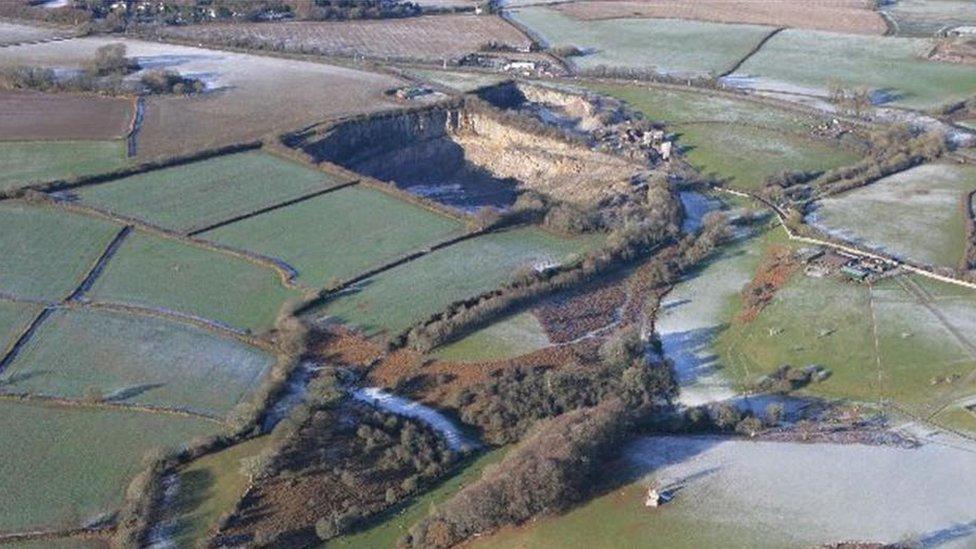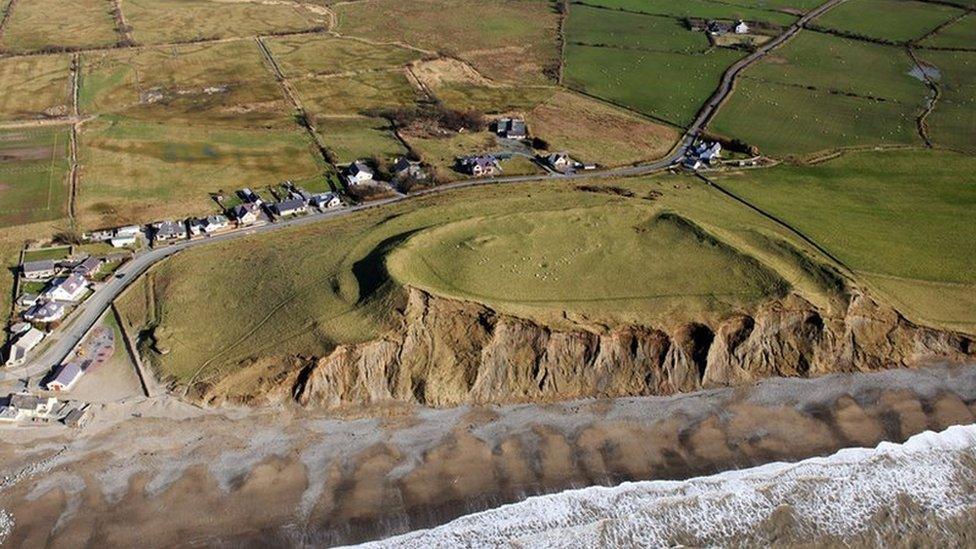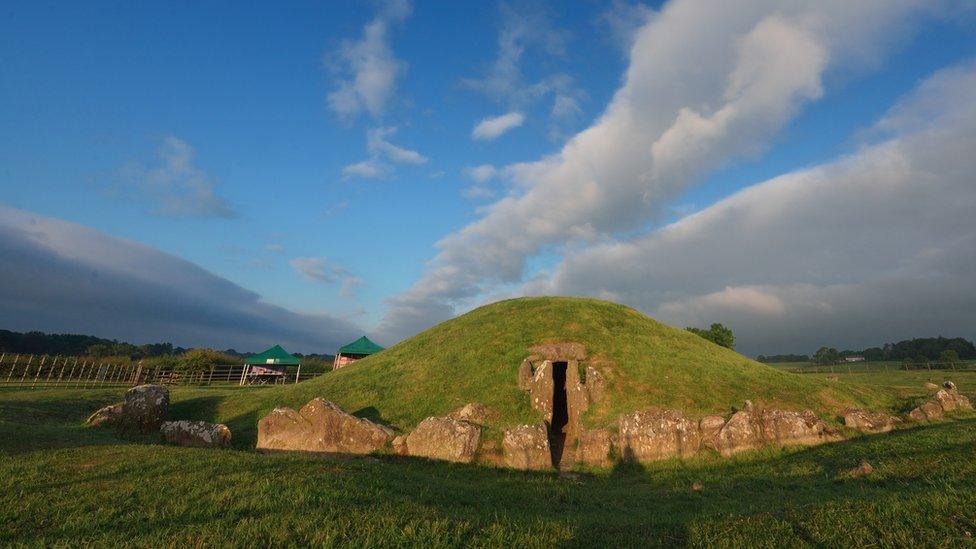Great Orme copper mine 'traded widely in Bronze Age'
- Published

Great Orme copper found in Bronze Age artefacts "stretching from Brittany to the Baltic"
North Wales was Britain's main source of copper for about 200 years during the Bronze Age, new research has found.
Scientists analysed metal from the Great Orme, Conwy, and found it was made into tools and weapons, and traded across what is today's Europe.
Historians once thought the Orme's copper mine - now a museum - had been a small-scale operation.
Experts now believe there was a bonanza from 1600-1400 BC, with artefacts found in Sweden, France and Germany.
The research, external, by scientists from the University of Liverpool, involved sampling copper ore from the old mine and a nearby smelting site.
It allowed experts like Dr Alan Williams, the geoarchaeologist who co-wrote the study published in the journal Antiquity, to create a "fingerprint" of the metal based on chemical impurities and isotopic properties.
"Remarkably, this metal is also found in bronze artefacts across Europe stretching from Brittany to the Baltic," he said.
Geological estimates suggest "several hundred tonnes of copper metal were produced, enough to produce thousands of bronze tools or weapons every year, equivalent to at least half a million objects in the 200-year bonanza period".
"This very extensive distribution suggests a large-scale mining operation [in Bronze Age terms], with a full-time mining community," he said.
Today, the copper mine is open to tourists after being uncovered in 1987 during landscaping on the Great Orme, itself a popular attraction.
It is now regarded as one of the largest prehistoric copper mines in the world.
- Published30 August 2019

- Published20 August 2019

- Published26 June 2019

- Published15 June 2019
